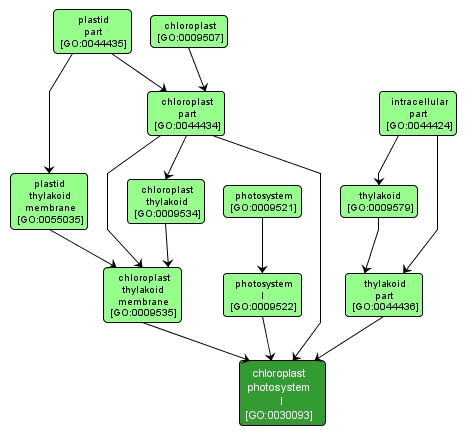GO TERM SUMMARY
|
| Name: |
chloroplast photosystem I |
| Acc: |
GO:0030093 |
| Aspect: |
Cellular Component |
| Desc: |
Photosystem located in the chloroplast that functions as a light-dependent plastocyanin-ferredoxin oxidoreductase, transferring electrons from plastocyanin to ferredoxin. An example of this is found in Arabidopsis thaliana. |
|

|
INTERACTIVE GO GRAPH
|














